1820-1861 The Dukes of Bedford
Bedford Lodge, on the Bury Road, boasts a rich history having been built as a hunting lodge in the 1820s as part of the extended Bedford Lodge Estate by Francis Russell, 7th Duke of Bedford and Marquis of Tavistock, born on 13 May 1788 to John Russell, the 6th Duke of Bedford and his wife the Honourable Georgiana Byng, daughter of the Viscount Torrington.Bedford Lodge, now the Bedford Lodge Hotel, was built in 1820 for John Russell, the 6th Duke of Bedford, with Bedford House and Stables, along with Bedford Cottage, which is now called Rockfield House, added a short while later by the 7th Duke of Bedford. Francis was educated at Westminster School and Trinity College, Cambridge before becoming MP for Peterborough. Within 3 years he represented Bedfordshire, later taking his place in the House of Lords. He married the Honourable Anna Maria Stanhope, daughter of the Earl of Harrington, on 8th August 1808 and they had a son, William who succeeded him on his death on 14th May 1861, 73 years and one day after he was born. In 1840 Admiral Rous, 'perpetual president of the Jockey Club' was appointed by the Duke to oversee his stud, stables and become private handicapper, a post which he held for 20 years. It must have been ironic for Rous when his great rival in the Jockey Club, Sir Joseph Hawley, bought the Bedford Lodge Estate. In the middle of the 19th century the Newmarket October meeting often began with a two-year-old colts Match. On Monday 12th October 1846 the Duke of Bedford's Taurina defeated Lord Chesterfield's Hollow-Back by 3 lengths for 100 Guineas in the opening race of the extended meeting.
For over 4 centuries racing has been staged in Newmarket, but how have the racecourses evolved from an initial starting point at Fleam Dyke Pumping Station, some 8 miles from the town, with a winning post barely 200 metres from the town centre, into two world recognized, excellent racecourses and a universal acceptance that Newmarket is the Headquarters of racing?
To access an interactive racecourse map showing over 50 individually named racecourses CLICK HERE. The map will enable you to:-
1. Determine when extended races over 8 miles, 6 miles and 4 miles began to be replaced by the courses now visited by thousands annually;
2. Consider how the challenge of crossing the Devil's Dyke was overcome;
3. Contemplate why the town no longer has a steeplechase course despite having at least 5 courses during the past 2 centuries;
4. Examine the practicalities of having up to 48 starting posts and winning posts;
5. Appreciate that it was not financially viable to have an open racecourse spread widely across the heath, with a finishing post barely 200 metres from the town centre;
6. Research how and why the Cambridgeshire Handicap has been contested over 3 different courses.
NOTE: The map does not make mention of 2 particular courses:-
(i) Sefton Course (also known as the Cambridge Road Course)
Source: 1970 Raceform. Used from 1959 to 1975.
(ii) New Circular Course
The Circular Handicap was run on Friday 29th October 1875 on the New Circular Course of about two miles.
Source: London Standard (30th October 1875): ''the horses started near the Turn of the Lands, ran back way of the Cambridgeshire Course towards the Ditch, and afterwards proceeded down the side of the Tan Gallop, and turned into the Rowley Mile near the Bretby Stakes starting post, finishing at the stand at the end of the flat. Except in the hollow near the Cambridgeshire start the runners should have been visible all the way if the sky had been bright and clear''.
Another report hoped that the Circular Handicap would become a feature in future programmes, as it would be contested in front of the new grandstand which would be completed in about a year and would be able to accommodate thousands.
(I am grateful to Tim Cox for bringing attention to these 2 courses.)
Enjoy researching the intriguing history of Newmarket and its many racecourses.
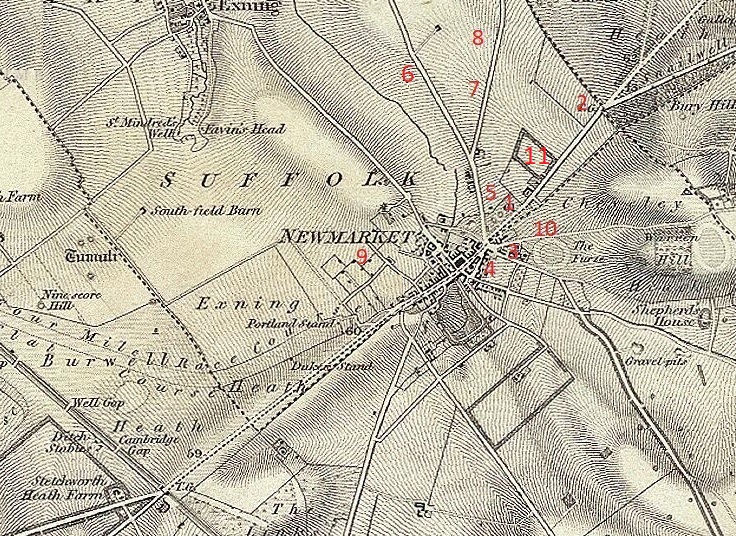
1861-1864 William Butler
Having purchased the Bedford Lodge Estate in the 1850s Sir Joseph Hawley sold Bedford Lodge to the Duke's racehorse trainer William Butler in 1861. William Butler was the brother of Classic winning jockey Frank Butler, and nephew of Sam Chifney junior, and also trained for Lord Stamford. Butler made significant changes to the Estate, separating Bedford Lodge, the Bedford House Stables and Bedford Cottage. He demolished Bedford Lodge stables soon after purchasing them in 1861, and sold the Lodge to Joe Dawson in 1864 for £6,500. He died in mid-January 1874 and was buried in Newmarket on Thursday 29th January 1874.
1861-1863 Sir Joseph Hawley
By the time the Duke of Bedford had died in May 1861 the Bedford Estate had been purchased by Sir Joseph Henry Hawley who went on to sell the Bedford Lodge part of the estate to William Butler in the early 1860s. Sir Joseph Hawley was born on 27th October 1813, and became a renowned and successful racehorse owner and breeder, although he took a while to learn his trade and make it profitable. He began with a few horses in 1847 which were trained in Newmarket by William Beresford, but by 1851 Hawley had purchased Fyfield in Wiltshire, appointing the legendary Alec Taylor to train for him. He was quickly rewarded, sending out 3 Derby winners prior to acquiring the Bedford Estate. In 1851 he owned Teddington (SR 2046) who won the Derby by 2 lengths from Marlborough Buck when ridden by Job Marson. In 1858 he owned and bred Beadsman (SR 2017) who landed the Epsom Derby by a length from Toxophilite in the hands of his regular jockey John Wells, and the very next year he completed consecutive Derby wins with Musjid (SR 2000), winning by half a length from Marionette when once again ridden by John Wells. However, it was while he was associated with the Bedford Estate that he sent out Blue Gown (SR 2042) in the hands of John Wells to win the Derby in 1858, beating King Alfred by half a length. His crowning glory during his period of association with Bedford House was winning the 1869 St Leger with Pero Gomez (SR 2005) ridden by John Wells, beating Martyrdom by a neck, fulfilling his long held ambition to win all 5 English Classics.
1862 Ascot Gold Cup ASTEROID owned by Sir Joseph Hawley, trained by George Manning and ridden by John Wells
1864-1880 Joseph Dawson
As soon as Joseph had purchased the Lodge he embarked on a programme to expand, develop and improve the facilities. He built the main stable block so that became as one with the house, but he was also ahead of his time in his training methods, introducing a new feeding regime, and he was also instrumental in racing two year olds when previously horses had only raced from three years old. In 1874 the principal jockeys listed at Bedford Lodge were Charles Wood (st 8lbs), Charles Loates (7st 2lbs) and Fred Jeffery (5st 7lbs). In 1876 Sir John Astley moved the majority of his horses, previously trained by Blanton, to Joe Dawson at Bedford Lodge, moving the remainder in 1879. In September 1877 Fred Archer wrote to Lord Falmouth, then based at Bedford Lodge, requesting to ride every horse for Gibson each Sunday in France, further stating that he was ‘not very satisfied with Mat (sic) Dawson for over-training his horses’. Towards the end of his tenure, and his life, Joseph Dawson had suffered from ill health for a number of years, and was a diabetic, but in the latter years, although he was nominally in charge, his wife Harriet, ably supported by the stable head lad Richard Sherrard, ran the stables. She had an association with the turf from an early age as her uncle John Fobert had had the good fortune to train The Flying Dutchman (SR 2099) to win the 1849 Epsom Derby when owned by the 13th Earl of Eglinton and ridden by Charles Marlow, before winning an epic duel against Voltigeur (SR 2073) at York Racecourse on 31st May 1851. Joseph died aged 56 at 6am at the Lodge on Friday 23rd July 1880, having suffered from enlargement of the liver for some time. After his death Bedford Lodge and Stables were purchased by Captain James Machell, installing Charles Hazlewood and Charles Arnull as trainer before leasing them to The Squire George Baird in 1884.
1870 Doncaster St Leger HAWTHORNDEN (SR 1887) owned by Thomas Vaughan Morgan trained by Joseph Dawson and ridden by Jemmy Grimshaw
1870 1000 Guineas HESTER (SR 1941) owned and trained by Joseph Dawson and ridden by Jemmy Grimshaw
1872 2000 Guineas PRINCE CHARLIE (SR 1997) owned and trained by Joseph Dawson and ridden by John Osborne jnr
1880 1000 Guineas ELIZABETH (SR 1874) owned by Mr T E Walker, trained by Joseph Dawson and ridden by Charles Wood
1880 Lincolnshire Handicap ROSY CROSS (16/1) owned by Mr Rymill, trained by Joseph Dawson and ridden by S Mordan
1880 FRIVOLA won the Earl of Spencer Plate at Northampton
1880 MEXICO won the Nottinghamshire Handicap
Felix Pryor, son of Vickris Pryor, was born in 1813 and died on Wednesday 2nd February 1887 aged 73, although his passing was largely unnoticed by the Sporting Press which had previously so regularly reported on his wins, losses and court cases.
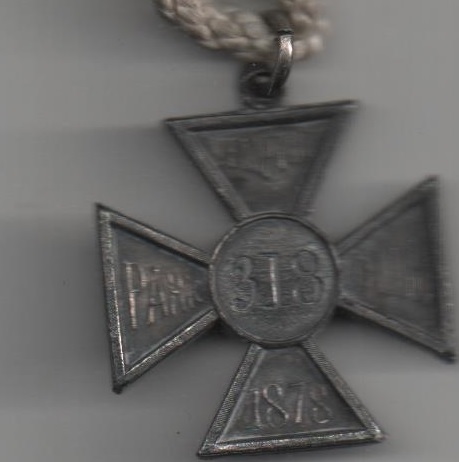
Felix Pryor had made his money in the city as a partner of the firm Truman, Hanbury & Co, but it was on the Turf that he was best known. He was not a good loser, always maintaining that he kept his horses for his own pleasure and amusement, and did not consider that there was any sort of necessity for him to regard the interests of the public in his betting transactions. Indeed, if he heard about anyone making profit from his horses then he considered it was analogous to having his pocket picked and dealt severely with the offenders. He certainly succeeded in teaching the 'sharps' that if they rushed his horses, taking his price, then their discomfiture was certain, communicating every detail to Admiral Rous, General Peel and Mr Payne, and expected the Jockey Club to act. Pryor's first good horse was The Rake which he bought as a yearling at Middle Park in 1865 on the very same afternoon that Mr Henry Chaplin purchased Hermit. Although Hermit arguably turned out the better horse, winning the 1867 Epsom Derby and St James’s Palace Stakes at Royal Ascot, The Rake also turned out to be a smart colt. It won the most important early Spring race at that time, the Althorp Park Stakes at Northampton, and trainer Joseph Dawson advised Pryor to allow The Rake to take a break from its Summer engagements, and return for an Autumn campaign in the inaugural running of the 2-y-o Middle Park Plate at Newmarket, run over the final 6 furlongs of the Bunbury Mile course, and worth £4875 to the winner. Reluctantly, Pryor agreed, although some of the racing public believed that The Rake had suffered a training setback and were eagerly awaiting his return so that they could bet against it. Throughout the Summer Felix Pryor amused himself backing his other horses, and filled his betting book by betting on the 1866 Epsom Derby won by the 5/6 fav Lord Lyon (SR 2031), as the extract from his betting book indicates. Note the bets with the likes of Fred Swindell and James Jewitt, amongst many others. He made a similar book on the 1867 Epsom Derby won incredibly enough by the aforementioned Hermit (SR 2022) at 1000/15, with his own horse, The Rake, unplaced at 9/1, having broken a blood vessel just days before the race. However, in October of the year before, The Rake duly lined up against 14 other two-year-olds in the Middle Park Plate, and was backed from 10/1 down to 4/1 second favourite; Achievement, owned by Colonel Pearson, drifted from 6/4 to 2/1, with Captain Machell's Knight of the Garter offered at 100/15. In the event The Rake took charge at the Bushes and won as he pleased by 3 lengths from Achievement, with Knight of the Garter a neck further back in third. A year later Felix Pryor had another good horse, Friponnier, who won a number of good early season races in 1867, and then went to Newmarket to defeat 1866 Derby winner Hermit, Hippia and Julius, and on the back of that win was made favourite for the Cesarewitch. However, Pryor instructed his betting agents to scratch the horse unless the execution of his own commission was made before the wider betting public stole his price. The inevitable happened, a well know bookmaker had a monkey on Friponnier and the price vanished, so Pryor withdrew the horse, stating his intention to run it in the Cambridgeshire a couple of weeks later, for which he was well handicapped, and would certainly have had a 7lb penalty had he won the Cesarewitch. Before the owner could get his money down the same bookmaker stole his price and turned out to be the loser because Pryor withdrew the horse again.
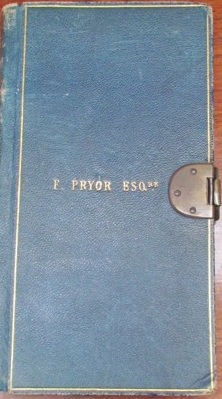
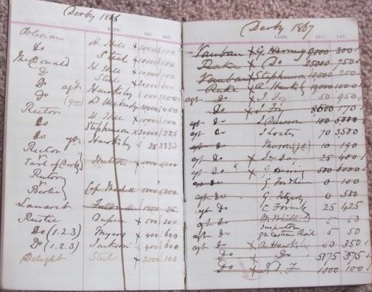
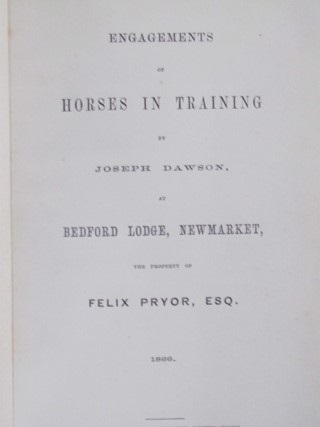
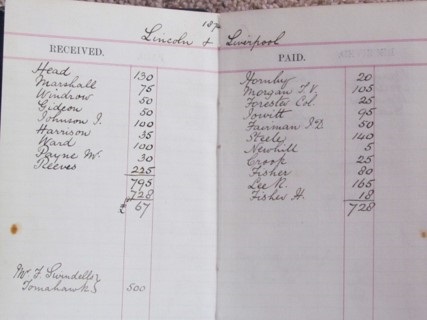
Joseph Dawson
Prince of Wales Stakes:-KING O' SCOTS (10/1)
All-Aged Stakes:-NORMANBY (6/5 fav)
Triennial Stakes 2nd Leg (Jersey):-NORMANBY (3/1)
Tom Jennings
Alexandra Plate (Queen Alexandra):-TROCADERO (6/4)
Fern Hill Stakes (Sandringham):-TURQUOISE (8/13 fav)
William Day
Royal Hunt Cup:-JUDGE (6/1 fav)
Wokingham Handicap:-ALLBROOK (2/1 fav)
Henry Woolcott
Gold Cup:-SABINUS (65/40 fav)
Joseph Hayhoe
New Stakes (Norfolk):-CORISANDE (7/1)
T Dawson
Ascot Stakes:-MUSKET (2/1 fav)
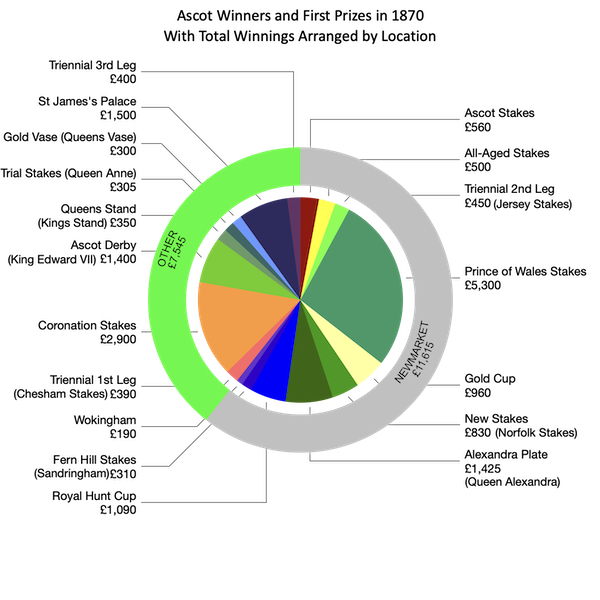
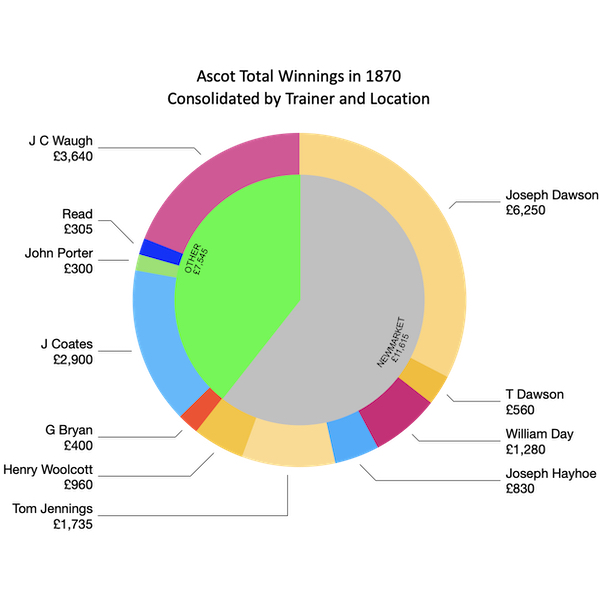
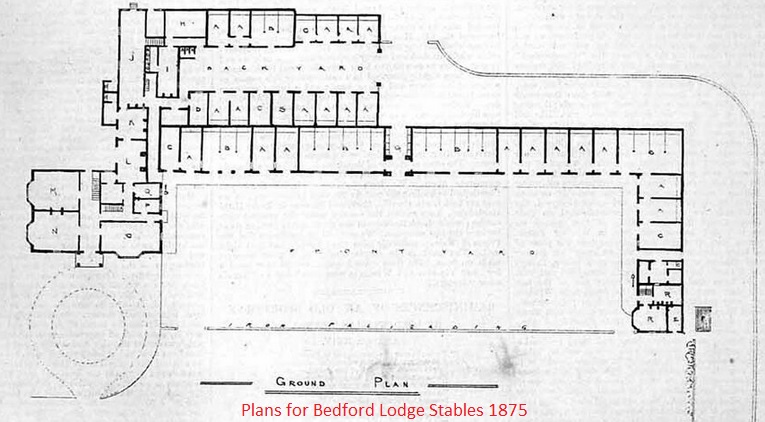
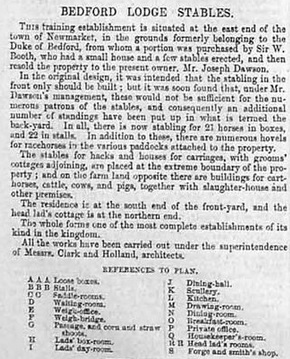
1881-1883 Charles Hazlewood
After the death of Joseph Dawson in 1880 Bedford Lodge was purchased by Captain James Machell, and he initially installed Charles Hazlewood as his personal trainer. By early 1881 Charles Hazlewood had moved to Bedford Lodge, instructing Messrs. Feist & Son to auction Joseph Dawson's furniture, his circular-fronted Brongham 4-wheel Pony carriage and 2-wheel Basket Pony carriage on Monday 14th March 1881 at the Rutland Arms.

November 1882-October 1884 Charles Arnull
In 1883 the famous Kelly's Directory listed Charles Arnull as the trainer at Bedford Lodge. He was born in Tamworth, Staffordshire in 1852 into a racing family and was certainly training at Bedford Lodge during the 1883-84 season, although he also spent time as head lad to Richard Sherrard before moving to Althorp Lodge in 1891. His father, John Arnull, rode 4 Derby winners, notably 1784 Serjeant (SR 1936), 1790 Rhadamanthus (SR 2029), 1796 Didelot (SR 2015), 1799 Archduke (SR 1996) and 1807 Election (SR 2030), while his uncle, Sam Arnull, rode 5 Derby winners, including the very first winner Diomed (SR 2046) in 1780, followed by 1782 Assassin (SR 2003), 1787 Sir Peter Teazle (SR 2062) and 1798 Sir Harry (SR 1965). Furthermore, his great uncle, William Arnull, held up the family tradition by riding 3 Derby winners, 1804 Hannibal (SR 2046), 1812 Octavius (SR 2015) and finally 1814 Blucher (SR 1984).
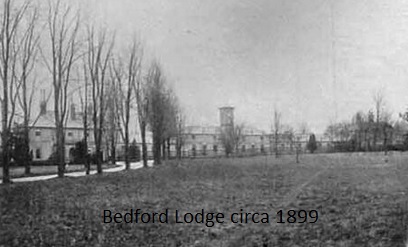
Captain James Machell purchased Bedford Lodge in 1884 and leased it to George A Baird, an amateur jockey, racehorse owner and breeder who, in turn, employed Martin Gurry as his trainer in 1886. In November 1884 an auction of ‘well-made and useful household furniture’ from Bedford Lodge was sold by Messrs. Feist & Son by direction of Her Grace, the Duchess of Montrose. On Tuesday 18th May 1886 a fire broke out in a stable block at between 4am and 5am. The fire was caused by sparks from a chimney, setting straw alight in one box. Martin Gurry acted quickly, applying a hose and calling the fire brigade, so confining the fire to just one box with just one horse singed. In early Spring Gurry and Baird fell out, but Gurry said he would only leave Bedford Lodge once he had been paid for the full term of his contract. Baird refused and transferred his horses to Compton, Berkshire. There was a stand-off with Baird in essence exiled from his own yard. In May 1887 The Squire relented and moved his horses back to Bedford Lodge to be trained by Martin Gurry. This continued to be a difficult working relationship and Gurry was dismissed in 1888, being replaced by Charles Morton in Summer 1888. Despite replacing Gurry there was a dispute between Baird, who was also known as ‘Mr Abington’, with Gurry threatening to take legal action to get his money. The Gurry/Baird dispute was settled out of court in mid-1890 after pressure was put on Squire Baird by the Jockey Club. As a consequence Gurry was then able to purchase his own stables which he called Abington Place, also on the Bury Road, which he used as his training base for 27 years, where he gained his second Classic success in 1895 with Sir James Miller’s La Sagesse. He retired in 1917 and died in 1923.
1887 Epsom Derby MERRY HAMPTON (SR 2061) owned by The Squire, George Baird, trained by Martin Gurry and ridden by John Watts
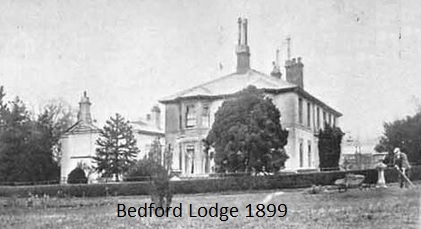
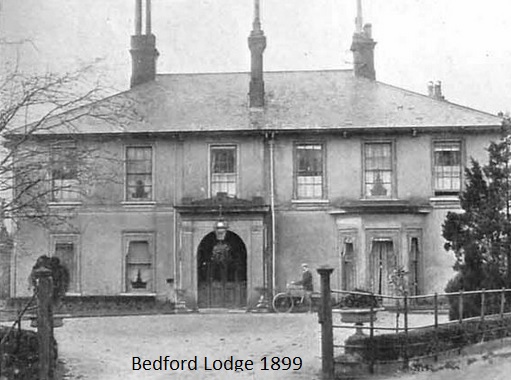
1888-1892 Charles Morton & George A Baird
In July 1888 Charles Morton took over the reins as the registered trainer at the Bedford Lodge Cottage Stables, replacing Martin Gurry who then moved to Red House where he replaced Mathew Dawson. In the early part of the 1892 season Charlie Morton had the Bedford Lodge horses fit and ready to race, only for The Squire to say they could not run unless he was at the meeting to ride them. Things reached an all-time low between The Squire and Charlie Morton on 31st May 1892 at Epsom. King of Diamonds was entered for the Egmont Handicap over 5 furlongs, but just as they were about to start word came from The Squire that he wanted King of Diamonds to be withdrawn. Charlie Morton refused, King of Diamonds won, winning again 2 days later. This infuriated The Squire and led to Charlie Morton telling Baird to find himself another trainer. In kindness and thoughtfulness to The Squire, Charlie Morton suggested he was retiring through ill health.
1892-1895 The Squire George Baird/Joe Cannon
In mid-1892, after Charlie Morton resigned The Squire invited Joe Cannon to take over as the Bedford Lodge trainer on a 5-year contract. He already had experience in the late 1870s and early 1880s of training at neighbouring Bedford Cottage for Captain James Machell, including training Pilgrimage to win the 1000 and 2000 Guineas for owner Lord Lonsdale. However, Joe was not particularly pleased with his association with The Squire. In the end it the relationship lasted barely a year because George Baird, who had moved to Moulton Paddocks to give Cannon a free run at Bedford Lodge, died in 1893, although Cannon remained until 1895.
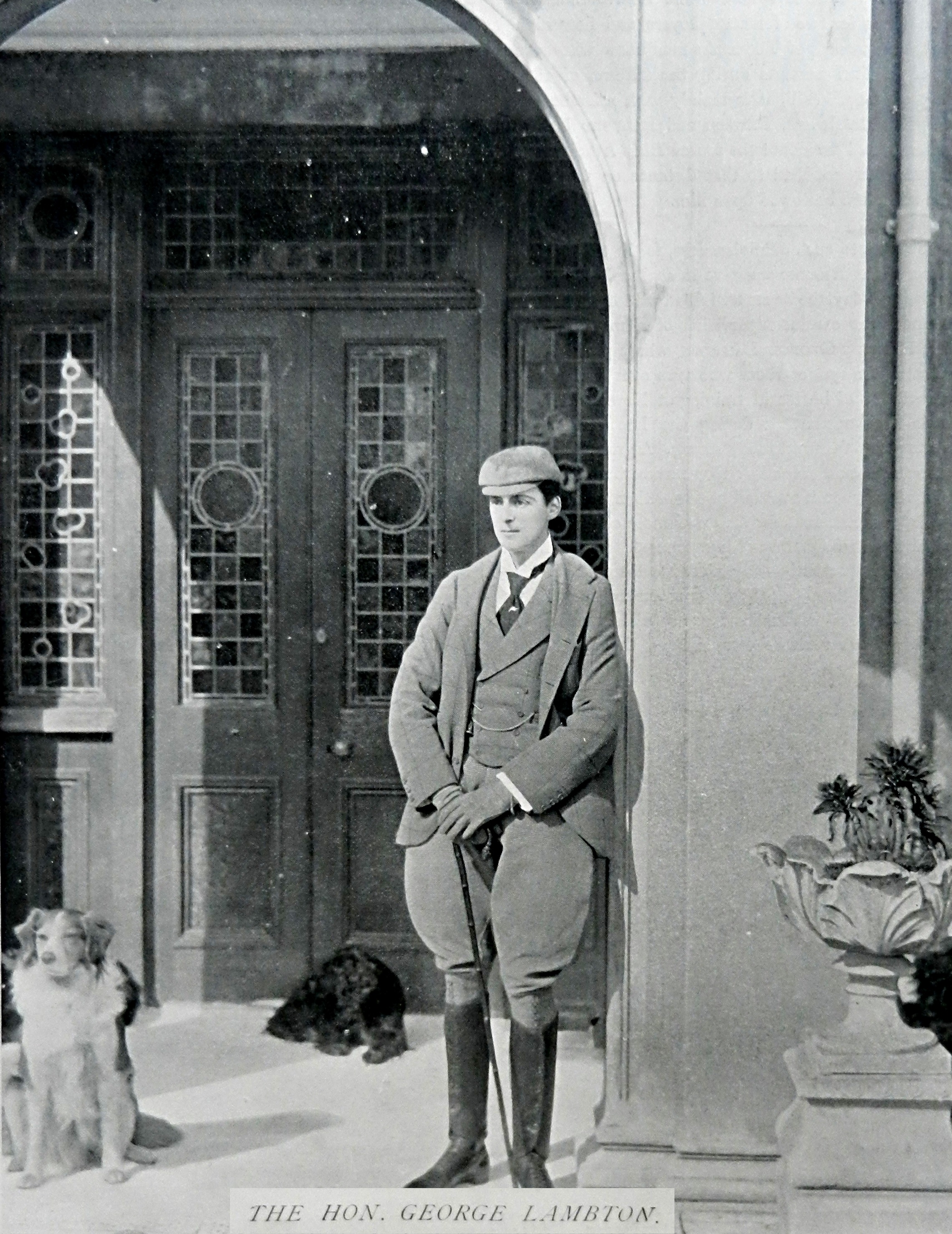
After George Baird died Bedford Lodge, there was a brief period when Joe Cannon was master at Bedford Lodge before the lease was taken over by Frederick Arthur Stanley, the 16th Earl of Derby, who not only took a significant interest in horse racing, but he was also responsible for launching the Canadian Stanley Cup awarded to the top ice hockey team. He was Governor of Canada for a time, but in 1904 and 1905 he had extensive work carried out improving Bedford Lodge. He took out a lease on Bedford Lodge which cost £1,850 per annum. Lord Derby employed George Lambton, aged just 33, as his personal trainer. At Christmas 1901 the lease expired after being held by the Earl of Derby for 6 years. At that time the house, reached through imposing iron gates from the Bury Road, consisted of 12 bedrooms, 4 reception rooms, a handsome billiard room and excellent domestic accommodation. There was stabling for 80 horses, accommodation for 30 stable hands, a cottage for the Head lad, and 38 acres which included 6 separate paddocks.
1896 Epsom Oaks CANTERBURY PILGRIM (SR 1902) owned by the 16th Earl of Derby, trained by George Lambton and ridden by Fred Rickaby
1906 Epsom Oaks KEYSTONE (SR 1927) owned by the 16th Earl of Derby, trained by George Lambton and ridden by Danny Maher
1910 Doncaster St Leger SWYNFORD (SR 1978) owned by the 17th Earl of Derby, trained by George Lambton and ridden by Frank Wootton
1916 1000 Guineas CANYON (SR 1896) owned by the 17th Earl of Derby, trained by George Lambton and ridden by Fred Rickaby jnr
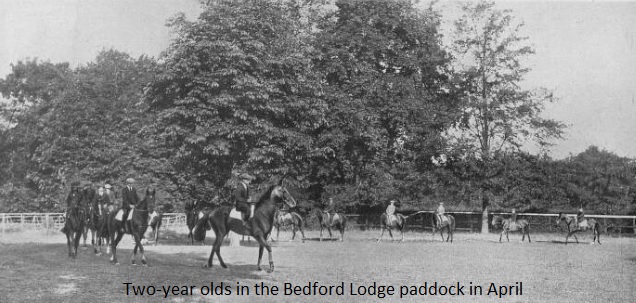
1902-1920 Captain Dewhurst, Lord Howard De Walden, James Rochfort Maquire, Lord Londonderry
In 1902 Mr Musker was offered, but declined, to take on the lease and it was therefore agreed it should go to auction. Christmas 1902 Lord Howard De Walden and his mother spent the holiday at the Lodge. On Monday 23rd February 1903 Bedford Lodge was offered for sale for £25,000 under the will of Joseph Dawson, but had to be withdrawn when the highest bid was £17,000. On 1st October 1903 Captain Robert Henry Dewhurst, previously a trainer in Ireland, began renting Bedford Lodge for £1,850 per annum, bringing over 30 horses from Ireland. He was born in Cheshire in 1860 and joined the 4th Hussars prior to becoming a racehorse trainer. In 1905 James Rochfort Maguire, formerly the MP for Clare, married the daughter of Viscount Peel on his return from South Africa, and moved in to Bedford Lodge, his horses being trained by C Waugh. In the years 1908 and 1909 Captain Dewhurst ran a highly successful campaign, training at Bedford Lodge for such high-profile owners as Earl Cadogan, Lord Saville and Mr T K Laidlaw. In March 1912 Mr W P Cullen, a well-known Irish point to point rider based at The Curragh, moved to Bedford Lodge to become racing manager to Captain Dewhurst. By the 1917 season Captain Dewhurst had 30 horses at Bedford Lodge, a dozen of which were owned by Lord Londonderry, half a dozen owned by Lord Savile, and 9 owned by Lord Zetland. In 1918 Lord Londonderry, Charles Vane-Tempest-Stewart, acquired Bedford Lodge, shortly afterwards purchasing Red Lodge, also in Newmarket
December 1920-1929 Robert Weston Colling
Robert Weston Colling was born into a hunting family at Marske-by-the-sea, North Yorkshire, on 6th April 1872. He was a successful apprentice to R W Armstrong in Penrith before riding over 300 winners, but weight got the better of him and he turned his hand to training at Spigot Lodge, Middleham, Yorkshire. In 1917 he ventured south to Waterwitch House, Newmarket where he remained until November 1920. In December 1920 he was appointed to train at Bedford Lodge, training in particular for Sir Robert Jardine, remaining there until 1929. He then left for Sefton Lodge where he spent 8 years of his career. After a highly successful training career he died aged 88 on 2th May 1960.
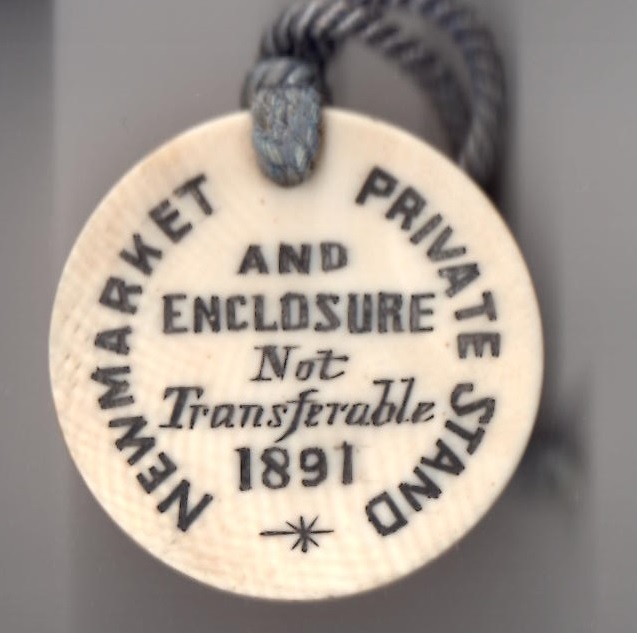
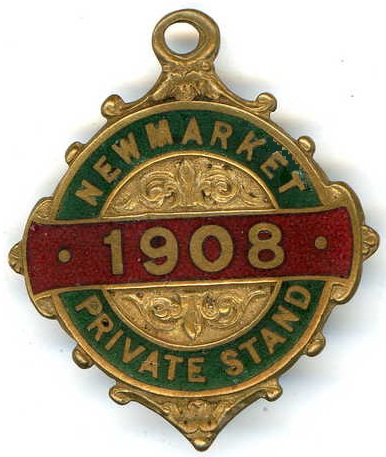
1929-1933 Lord Beaverbrook, Joseph Cannon, Noel Cannon
Bedford Lodge was sold to Canadian William Maxwell Aitken, Lord Beaverbrook who was a newspaper magnate, founding the Daily Express and Sunday Express in 1918. He was known as the Baron of Fleet Street and, during his ownership of Bedford Lodge, he renamed it Calvin House. Between 1929 and 1933 Joseph Henry Cannon, son of Joe Cannon, and known as 'boxer', trained at Bedford Lodge Stables. In 1933 his brother Noel successfully applied for a trainers licence and took over at Bedford Lodge from his brother, and during his short tenure at Bedford Lodge he also managed Melton Stud near Thetford, Norfolk.
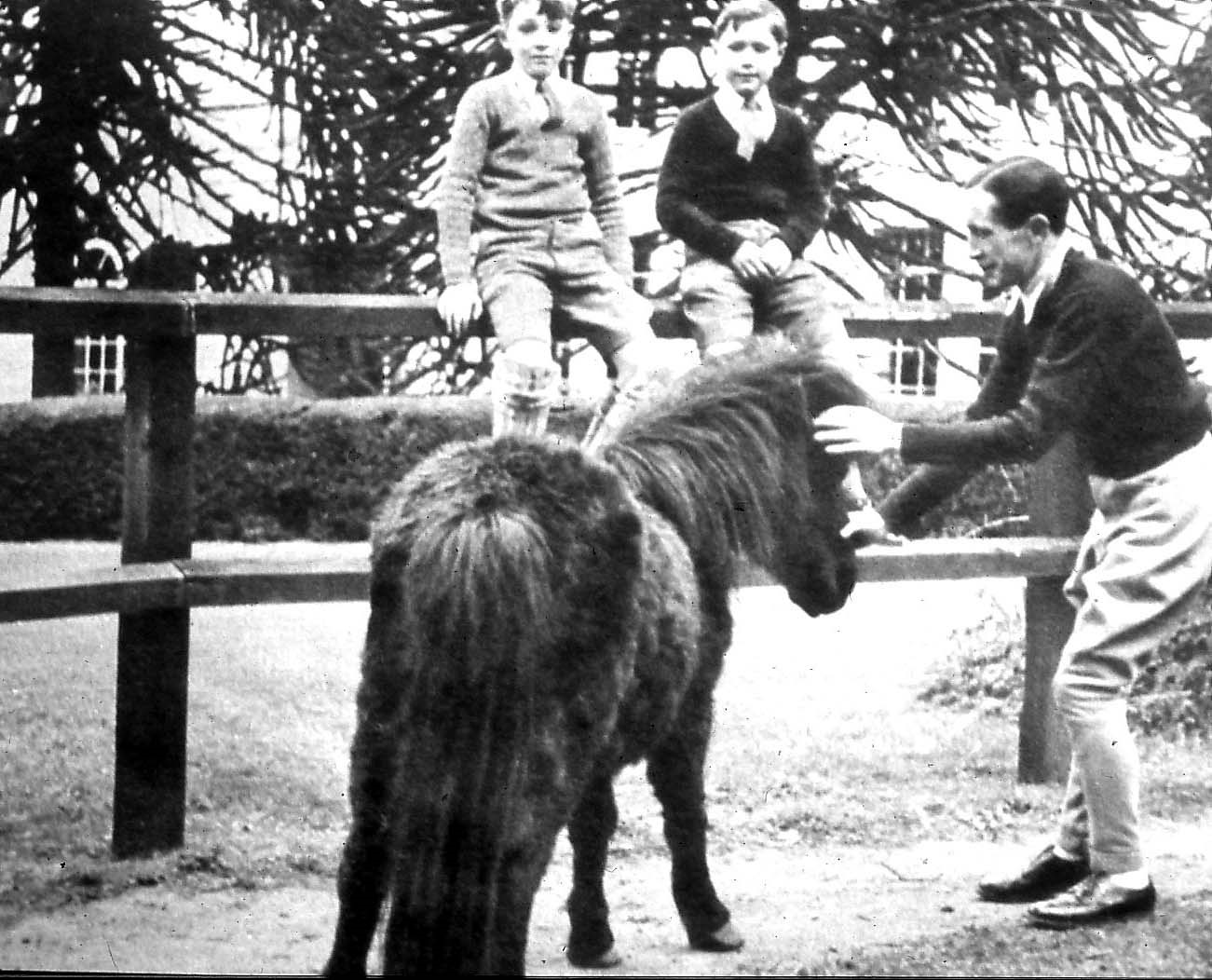
December 1932-1945 Harvey Leader
Harvey Cliff Leader, youngest son of Tom Leader, who originated from Wroughton, Wiltshire, was born in Newmarket on 16th September 1892. He enjoyed a successful career as a jockey before turning his hand to training in 1918, and in June 1924 he purchased Beechwood House and Stables, Exning, training there from November 1924. He remained at Exning until 1931, transferring to Paddock Cottage, but on Thursday 29th December 1932 he moved to Bedford Lodge Stables. In 1933 he made a bid to purchase Clarehaven Stables, but the bid was unsuccessful, and he continued to train at Bedford Lodge. When his oldest brother, Thomas Richard Leader, died on 24th June 1945 he left his Wroughton House Stables to Harvey who moved his string across to his new stables.
1932-1946 Harry Wragg & George Scott Colling (1935-1938)
Calvin House was purchased by Harry Wragg, the jockey known as the ‘head waiter’ who later became an equally successful trainer. He ensured its name back was reverted back to Bedford Lodge.
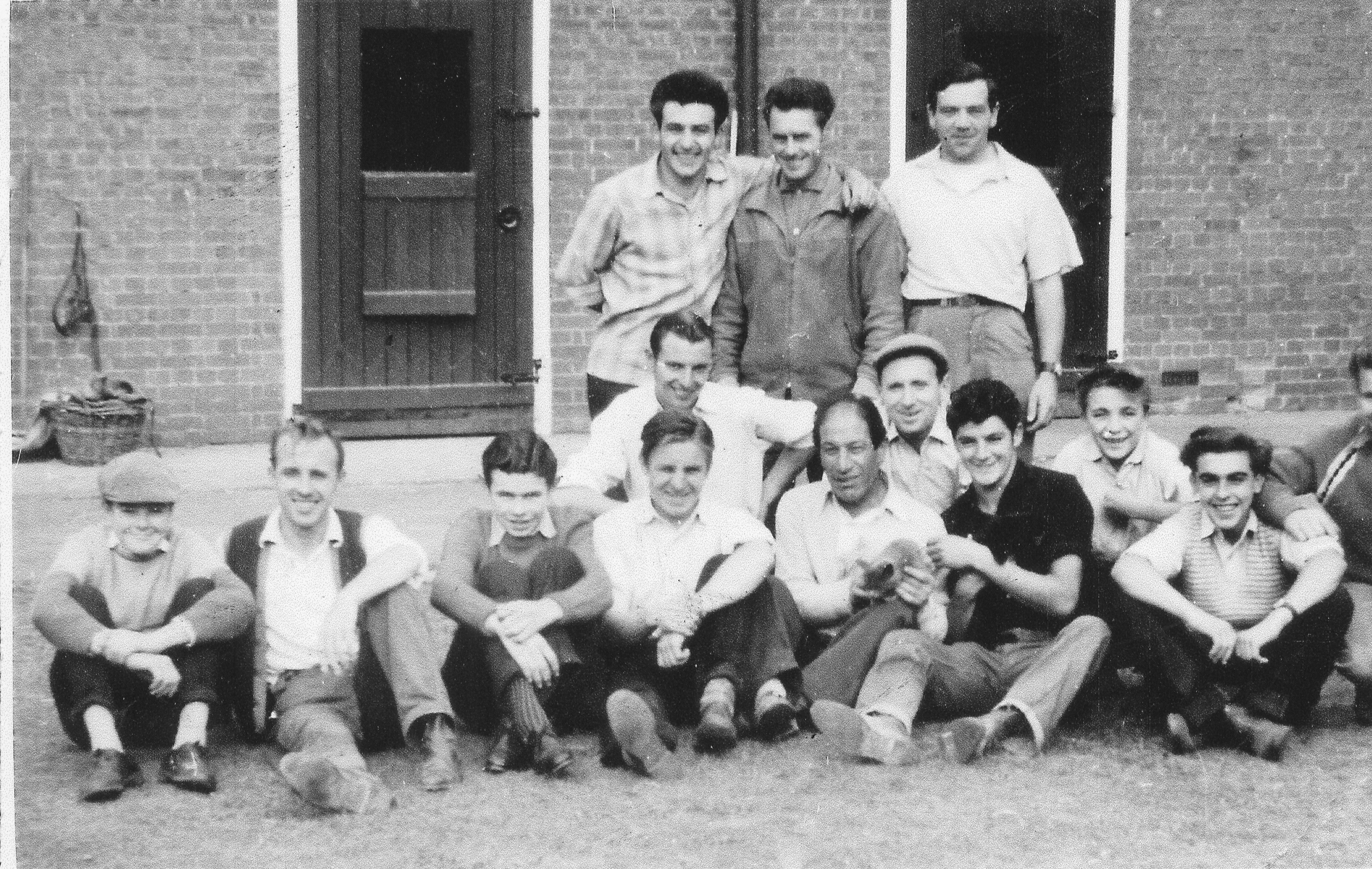
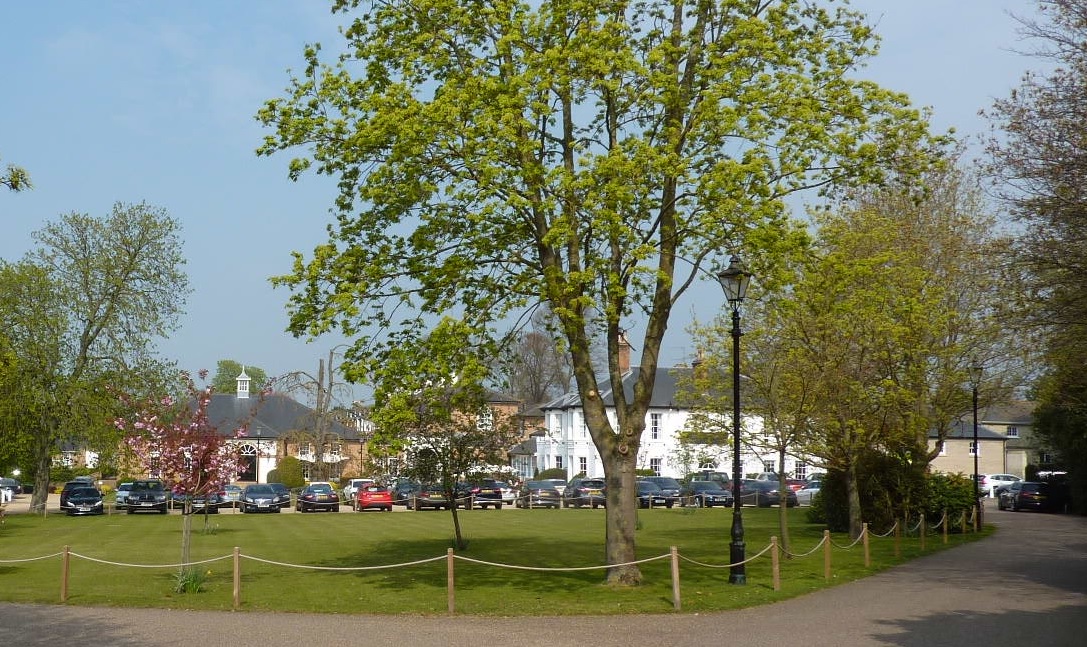
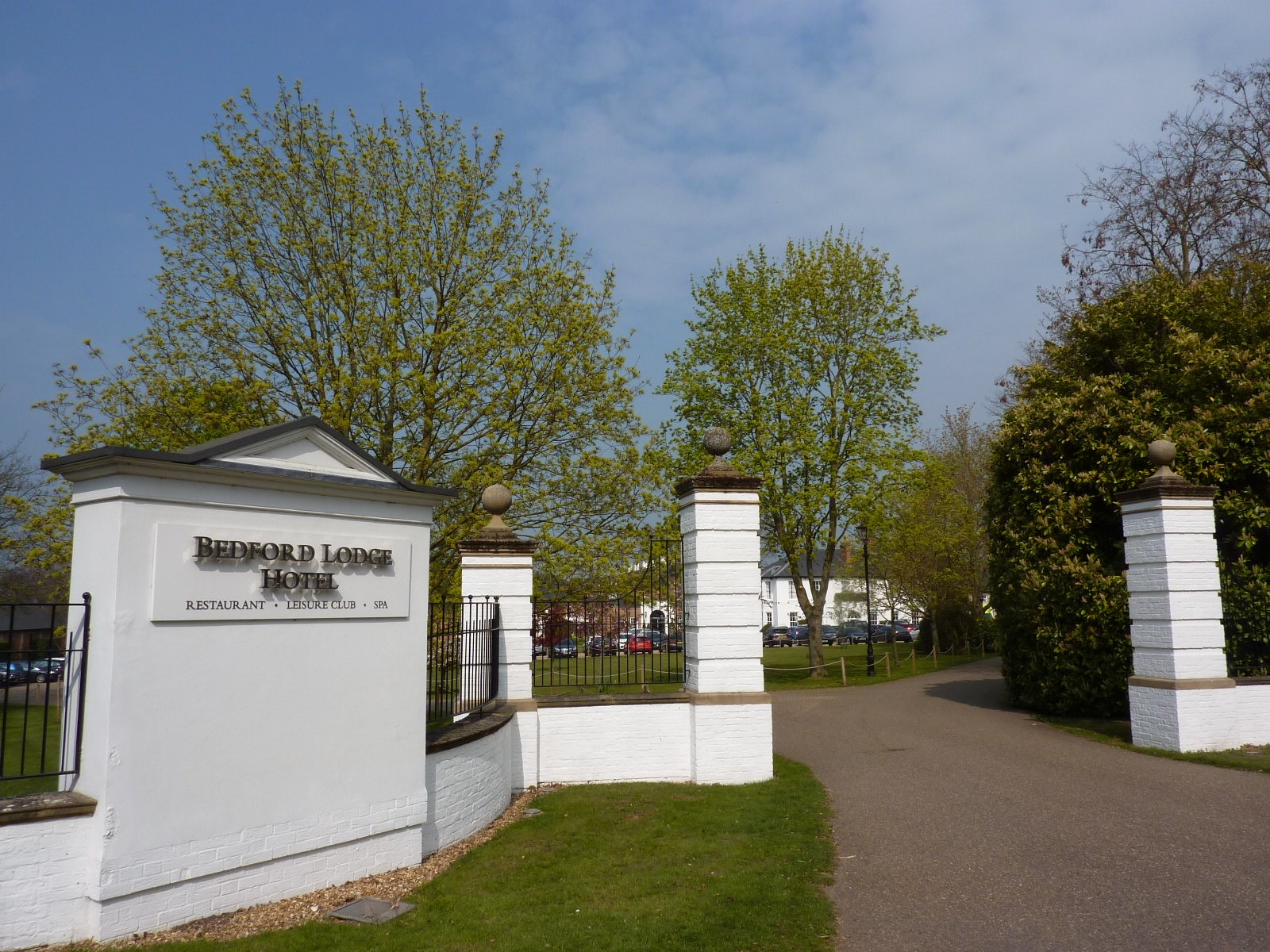
1947-present
In 1947 Bedford Lodge was opened as a hotel and it remains one of Newmarket's most prestigious hotels.
MERRY HAMPTON (1887 Epsom Derby)
PRINCE CHARLIE (1872 2000 Guineas)
SWYNFORD (1910 Doncaster St Leger)
KEYSTONE (1906 Epsom Oaks)
CANTERBURY PILGRIM (1896 Epsom Oaks)



